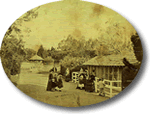



Provenance
005 - Albert Sherbourne Le Souëf
005 - Albert Sherbourne Le Souëf
|
Home Provenance Series List Index Search |
| Date Range | 1877 - 1951 |
| Details Albert Sherbourne Le Souëf was born on 30 January 1877 at Royal Park, Melbourne and his early path followed the experiences of his elder brother, Ernest. Sherbourne was educated at Carlton College and the Melbourne Veterinary College where he graduated Bachelor of Veterinary Science. He was groomed as his brother's inevitable successor and became involved in the Zoological and Acclimatization Society as its secretary in 1897. After A.A.C. Le Souëf's death in 1902, Sherbourne was appointed assistant director of the Melbourne Zoo. However, it was more than nepotism at work, Sherbourne like his siblings before him exhibited a genuine ability and canny talent. The appointment in Melbourne proved short-lived and in April 1903, Sherbourne accepted an offer to become Secretary of the Zoological Gardens in Sydney. He was confronted with an immense task. The 17 acre site at Moore Park was hopelessly inadequate; cramped and filthy, surrounded by trams and obsolete enclosure. Apparently undaunted, Sherbourne and his colleague Dr. R.H. Todd were sent to Europe in 1907 and were as impressed with Hagenbeck's momentous and naturalistic design as Dudley Le Souëf had been. On his return, Sherbourne intent on developing Sydney Zoo opposed the government's purchase of Wentworth park. He strenuously argued for a more suitable site and urged them to select the military reserve which was located on the Mosman side of the harbour. The Premier supported the application but the Mosman Council objected citing noise. After prolonged negotiation, the Council finally accepted when Sherbourne agreed to face the enclosure south and have high concrete walls to effectively stifle any animal noise. In an attempt to create the most modern, natural and aesthetic zoological garden, Sherbourne began to implement the European design and inspected Melbourne Zoo where his brother, Dudley suggested the name Taronga which meant "sea view". As its first Director he supervised the planning and development of Taronga Zoo, and influenced by Hagenbeck, devised camouflaged enclosures. Construction was prolonged due to the magnitude of the building and the animals were finally transferred from Moore Park in 1916. Sherbourne remained a dedicated leader of the zoological community. He lectured frequently, travelled widely, embarked on numerous collecting trips and was a prolific contributor to journals and newspapers. A passionate advocate of reserves, Sherbourne supported the establishment of fauna and flora reservations and sanctuaries. He was also a committed member of the Royal Society of New South Wales, a counsellor of the Royal Zoological Society of New South Wales for almost fifty years and a corresponding member of the Zoological Society in London. In 1940, Sherbourne retired as the Director of the Taronga Zoo. He died on 31 March at Mosman and was survived by his wife Mary Emily Louise Graves who he married on 22 April 1908. They had no children. | |
| References | Butcher, A. Dunbavin, Australian Dictionary of Biography 1851-1890. Le Souëf, Albert Sherbourne, "How We Built Taronga Park". Le Souëf, J. Cecil, Address titled "The Development of A Zoological Garden at Royal Park", 19 November 1963. Le Souëf, Ivan, "The Le Souëf Family in France and Australia", 1975. MacKenzie, Alexander Kenneth, memoirs, undated. |
|
Published by the The University of Melbourne eScholarship Research Centre, January 2008
With support from Friends of the Zoos and Royal Melbourne Zoological Gardens Listed by Gavan McCarthy, Andrea Barnes and other Austehc staff HTML edition Ailie Smith Updated 27 November 2008 http://www.austehc.unimelb.edu.au/guides/leso/005.htm The template for this finding aid is part of the Heritage Documentation Management System |
[ Top of Page | Home | Series | Provenance | Search | Index ] |